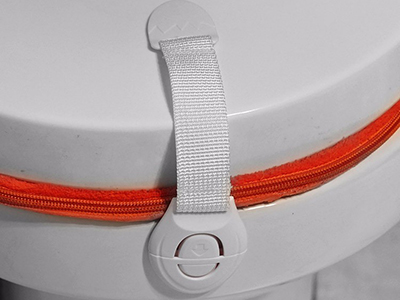Home safety tips for the young ones

Home is a place to relax, play and enjoy spending time with family. Accidents happen, and there will be minor scrapes and bruises along the way, especially as kids grow and discover new things. And that’s OK. The problem is the more serious injuries that are often completely preventable.
Here are a few things to learn about the things you can do to help ensure that your kids get the freedom that comes from being active, healthy and safe at home.
Batteries
- Keep devices out of sight and reach of children. These include remote controls, singing greeting cards, watches, hearing aids, thermometers, children’s toys, calculators, flashing jewelry or decorations that contain button batteries.
- Keep loose batteries locked away, or place a piece of duct tape over the controller to prevent small children from accessing the battery.
Burns and Scalds
- Don’t carry or hold a child while cooking on the stove. Instead, move a high chair in the kitchen within reach or sight before you start. Then talk to your children so they know what’s going on. It’s a great way to spend time together.
- Kids love to reach, so to prevent hot food or liquid spills, simply use the back burner of your stove and turn pot handles away from the edge.
- Keep hot foods away from the edge of your counters.
- Make a habit of placing matches, gasoline and lighters in a safe place, out of children’s reach.
- Avoid novelty lighters or lighters that look like toys.
Carbon Monoxide
 Carbon monoxide poisoning can result from coal jikos, faulty furnaces or other heating appliances, portable generators, water heaters, clothes dryers, or cars left running in garages. At its worst, carbon monoxide can cause severe side effects or even death.
Carbon monoxide poisoning can result from coal jikos, faulty furnaces or other heating appliances, portable generators, water heaters, clothes dryers, or cars left running in garages. At its worst, carbon monoxide can cause severe side effects or even death.
- Don’t use a grill, generator or camping stove inside your home, garage or near a window.
- Don’t leave a car engine running inside a garage.
- Cook with coal jikos outside in an open area
Choking
- Cut food for toddlers into tiny pieces.
- Consider your child’s age when purchasing a toy or game. It’s worth a second to read the instructions and warning labels to make sure it’s just right for your child.
- Before you’ve settled on the perfect toy, check to make sure there aren’t any small parts or other potential choking hazards.
- Keep small magnets away from children. These include magnets found in construction sets, children’s toys or stress-relieving adult desk toys; refrigerator magnets;
- Keep cords and strings, including those attached to window blinds, out of your child’s reach. For your crawlers and climbers, move chairs, cribs and other furniture away from windows to help prevent window falls. Just make a few moves now and you don’t have to worry about it later.
Falls
- Keep babies and young kids strapped in when using high chairs, infant carriers, swings or strollers.
- When placing your baby into a carrier, remember to place the carrier on the floor, not on top of a table or other furniture.
- Use approved safety gates at the tops and bottoms of stairs and attach them to the wall, if possible. Remember to read the manufacturer’s instructions and warning labels to make sure you have the right gate for your needs. Not all gates are safe for use at the top of stairs.
- Take your kids to playgrounds with shock-absorbing surfaces such as rubber, synthetic turf, sand, pea gravel, wood chips or mulch. If your child falls, the landing will be more cushioned than on asphalt, concrete, grass or dirt.
Fire Safety
- Teach kids never to play with matches and lighters. Make a habit of placing these items up and away from young children.
- Children should know how to respond to the sound of a smoke alarm. Teach them to get low and get out when they hear it. A child who is coached properly ahead of time will have a better chance to be safe.
- Use common sense in the kitchen. Limit distractions when cooking and don’t leave a hot oven or stovetop unattended.
Medication Safety
- Put all medicines up and away and out of sight including your own.
- Consider products you might not think about as medicines. Most parents store medicine up and away – or at least the products they consider to be medicine. They may not think about products such as diaper rash remedies, vitamins or eye drops as medicine, but they actually are and need to be stored safely.
- Use the dosing device that comes with the medicine. Proper dosing is important, particularly for young children. Kitchen spoons aren’t all the same, and a teaspoon or tablespoon used for cooking won’t measure the same amount as the dosing device. Use the dosing device that comes with the medicine to prevent dosing errors.
Poison
- Store all household products out of children’s sight and reach. Young kids are often eye-level with items under the kitchen and bathroom sinks. So any bleach, detergents, dishwasher liquid or cleaning solutions that are kept there should find a new storage location.
- Read product labels to find out what can be hazardous to kids. Dangerous household items include makeup, personal care products, plants, pesticides, lead, art supplies, alcohol etc
- Make sure that all medication including vitamins and adult medicines, are stored out of reach and out of sight or children.
- Check for lead-based paint. Remove any peeling paint or chewable surfaces painted with lead-based paint.
Sleep Safety and Suffocation
- Because most infant suffocation occurs in the sleeping environment, babies should always sleep in a safe crib.
- Lay your baby on his or her back for every sleep
- We know that stuffed animals, bumpers and all those cute accessories make a baby’s crib seem warm and cozy. Unfortunately, they can often do more harm than good. Soft bedding can block a baby’s airway during sleep. A firm mattress covered with a tight-fitting crib sheet is all you need to make your baby sleep like a baby.
- Room-sharing is a safer option than having your baby sleep in bed with you. Place your baby’s crib, play yard or bassinet in your room for more convenient feeding and close contact.
- Remember to always return your baby to his or her own crib when you’re ready to go back to sleep. This is tough sometimes because parents are often more tired than the babies, but it is much safer.
Toy Safety
- Consider your child’s age when purchasing a toy or game. Read the instructions and warning labels to make sure it’s just right for your child.
- Before you’ve settled on the perfect toy, check to make sure there aren’t any small parts or other potential choking hazards.
- Keep a special eye on small game pieces that may be a choking hazard for young children. While these kinds of games are great for older kids, they can pose a potential danger for younger, curious siblings.
- After play time is over, use a bin or container to store toys for next time. Make sure there are no holes or hinges that could catch little fingers.
TV and Furniture Tip-Overs
- Assess the stability of the TVs in your home.
- Mount flat-screen TVs to the wall to prevent them from toppling off stands. Follow the manufacturer’s instructions to ensure that you have a secure fit.
- If you have a large, heavy, old-style TV, place it on a low, stable piece of furniture.
- Use brackets, braces or wall straps to secure unstable or top-heavy furniture to the wall.
Water Safety at Home
- Never leave your child unattended around water. There is no room for compromise on this one. Babies can drown in as little as one inch of water.
- Put the cell phone away, forget about all the other things you have to do and give young children 100 percent of your attention when they are near or around water.
- Empty all tubs, buckets, containers and wading pools immediately after use. Store them upside down and out of children’s reach.
- Keep toilet lids closed and use toilet seat locks to prevent drowning. It’s also a good idea to keep doors to bathrooms and laundry rooms closed.
